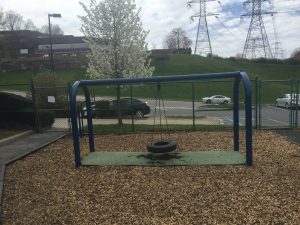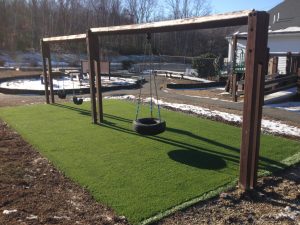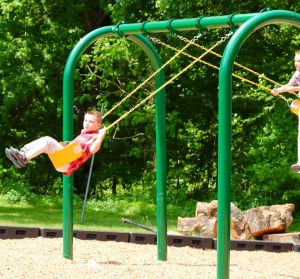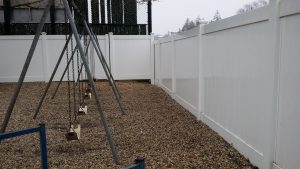With recent playground regulations, the length of chains on swings continuously gets shorter because it is thought to be safer. Children’s sensory input increases as the height of swings increases. As Angela J. Hanscom references in her book “Balanced and Barefoot,” vestibular input is important for children’s development. As swings keep getting shorter, children access vestibular development less and less. Adults supervise and regulate creative play on swings. Children are no longer allowed to spin around as they please.
At Trassig, we encourage safety but also, we want children to receive as many benefits as possible from playing. Swings can provide a great amount of sensory stimulation if children can go as high as they want and play freely. As adults, we must take the word “dangerous” with a grain of salt. If we teach children to be aware of their surroundings and other children while playing, they should be able to play freely and spin on the swings. If children are not limited by the “dangers” on swings, they can creatively come up with multiple ways to play on them. Jump off, spin around, go as high as they can, etc.
Use Zone
The use zone for swings is six feet from each post, every which way. However, the use zone from the front and back of the swing should be greater than the sides because children can be launched forward or backward. This use zone should not be overlapped with any other equipment or bordering. In the photo to the left, the fence is too close to the back of the swings. If children were to fall backward while on the swing, they could be easily injured by hitting the fence behind them. A hazard such as this must be fixed. The area needs to be clear of anything children have the risk of coming in contact with.
Safety
The fall height of swings is the height of its pivot point to the protective surfacing. However tall the pivot point is from the surface, is the fall height. The Critical Height must be the height of the pivot point or higher. ASTM 8.6.6
The Public Playground Safety Handbook (pg. 37-38) recommends the following for swing safety:

Difference between passing and failing s-hook according to ASTM F1487. Both upper and lower loops must be less than 0.04 inches.
Anything that secures suspending parts of swings should only be removable with tools
- S-hooks are often what are used to secure swing suspension, make sure they’re tightly closed to avoid entanglement.
- Whatever system swings are suspended from, should not have the ability to be climbed.
- “A-frame support structures should not have horizontal cross-bars.” Handbook for Public Playground Safety (37)
- Fiber ropes degenerate over time and should not be used for suspension.
- Use zone limitations should be followed at installation and swings should be away from other equipment in general.
Tire Swings
Tire Swings, also known as multi-axis swings, are normally horizontal and hung by three chains/cables to a single top section. This connection allows the swing to rotate in multiple axes, something a regular single-axis swings do not do. There should only be one tire swing per bay, as the multi axis rotation could cause swings to collide and cause injury. The distance between the bottom of the seat and the safety surfacing should be 12 inches or more. When the tire swing is closest to the supporting structure, the distance from the swing to the support should be at least 30 inches.
 Use Zone
Use Zone
The use zone for tire swings is in every direction from the point under the pivot for a distance of 6 or more feet plus the length of the suspensions. No other playground equipment should be in any part of the use zone for tire swings. If another piece of equipment is in the use zone, a child could come in contact with it and it could cause serious injury. The use zone should go another six feet from the swing’s structure’s perimeter.


